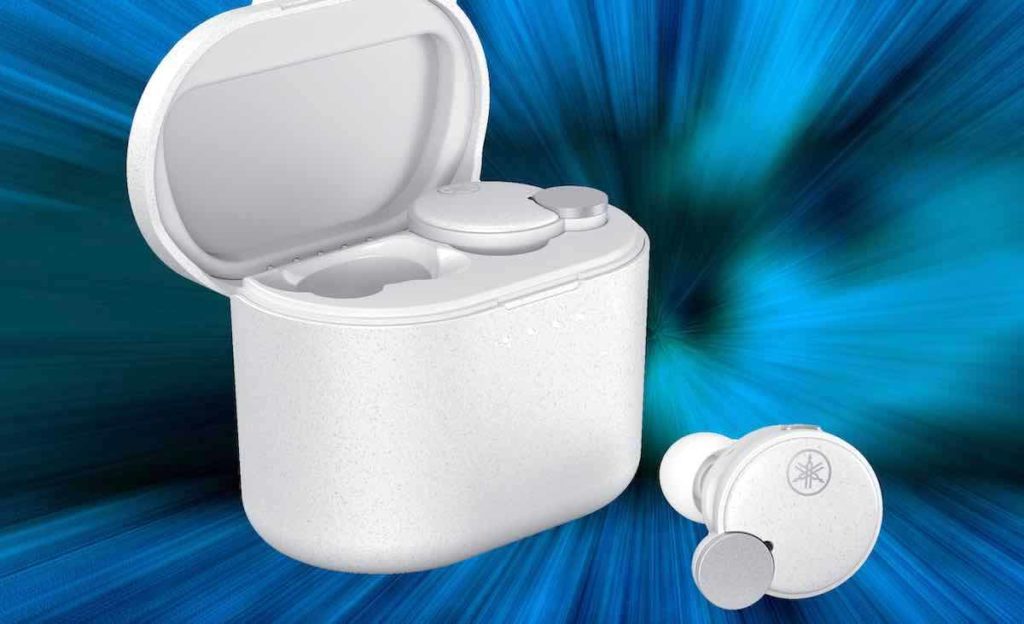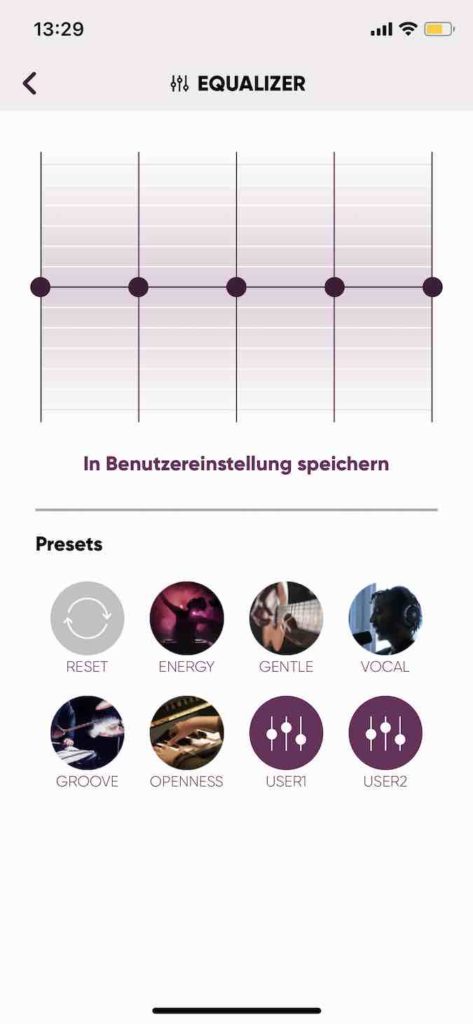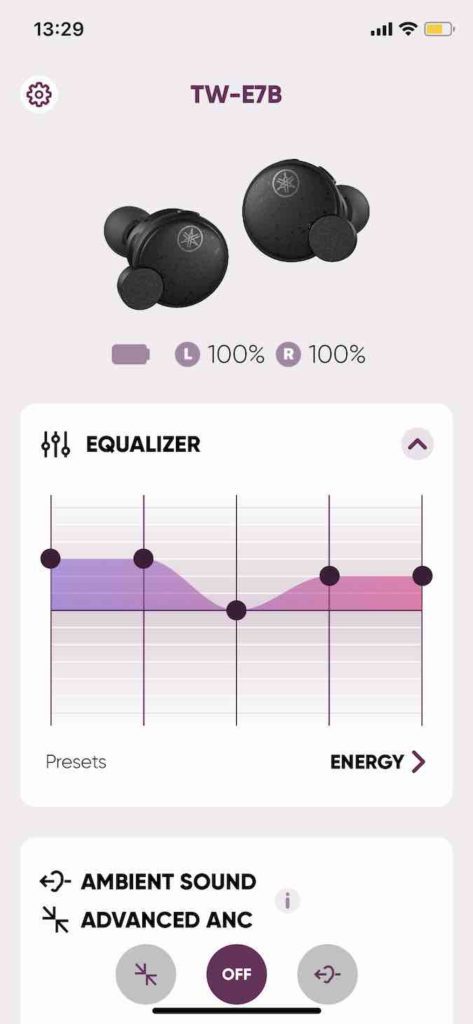Yamaha TW-E7B TWS review
When reviewing the Yamaha TW-E5B, we really liked its detail-rich sound and audiophile approach. However, selling expensive earbuds without any adaptive noise cancelling is pretty hard these days. So we were really looking forward to the Japanese manfacturer´s TWS flagship Yamaha TW-E7B.
Visually and haptically it is definitely marking a different approach than the TW-E5B: Its design concept seems to be consisting of a larger and a smaller disc which do not look particularly ergonomic at first. However, they are quite far from the ear canals and auricles and are therefore should not annoy anyone. Between the characteristic discs and the actual ear canal, we found a middle part which appears to be pretty ergonomically adopted to the shape of a human auricle. It rests on the lower part of the auricle relying on some kind of groove, which might make it uncomfortable to very large or very small ears.
Any color you like
Besides black and beige, Yamaha offers bicoloured combinations of either white/silver and blue/brown. Their large surfaces are coated with some kind of Japanese textured lacquer, same applies to the pretty solid but rather chunky charging case. If you come to the conclusion there might be some kind of touch feature behind it, this is not the case as the TW-E7B are relying solely on real keys. So overall it gives a nice feeling of some classic hi-fi gear in a nutshell.
Bluetooth 5.2 is the only yet technically advanced option to bring music to the earbuds.Both codecs AAC and aptX Adaptive are implemented in addition to the standard SBC, so practically all owners of modern devices should be rather happy with the bandwidth of the data stream.
Yamaha claims the battery would last for 6 hours, which is reasonable in practical use but not top-of-the-notch. Recharging them three times in the case, you get a total runtime of 22 hours.


Classic technology, modern electronics
Yamaha has obviously not forgotten its hi-fi roots when it comes to the transducers: The drivers equipped with a coated diaphragm measure an impressive 10 millimeters in diameter. A separate mic is positioned closely next to the diaphragm so the actual sound pressure in the enclosed volume is permanently monitored.
On one hand, this enables the adaptive noise cancellation: its algorithm is ontinuously analyzing the noise from the external mics, calculating out-of-phase soundwaves to exactly cancel that out, plus permanently comparing the result in the ear canal.
The manufacturer is thereby promising some kind of automatic correction for different ear canal shapes regardless how tightly you insert the earbuds. It goes without saying that the latter only makes sense if the ear canal is more or less sealed.
As a total of 5 different rubber adaptors are included, an appropriate fit should be achievable. As the graduation of sizes is very fine, many listeners might even consider fitting two adapters of adjacent sizes. The individual choice might be translating to some kind of subtle sound tuning, as tighter fi tusually translates into deeper, more substantial bass.
How to deal with buttons
If the earbuds are inserted correctly – Yamaha logo facing upwards – you can feel the buttons for playback/pause (left) and volume up (right) exactly on top of the cases. As known from the TW-E5B, these offer a rather defined pressure point. Sometimes you have to press a bit too hard, so the earbuds might feel like they slip out easily if you do not hold them with two fingers while pressing. This makes double-clicks, which are required for track skipping, a finger exercise which you really have to get used to.


Not to be confused: The app
An app control is what you would expect in this price range. Yamaha thought the same offering both an IOS and Android version. In noth cases, search for Yamaha Headphone Control App. If you accidentally download “Yamaha Headphones Controller”, you will notice that it is not compatible with the TW-E7B. Pretty confusing.
Besides a battery level indicator, there is a 5-band graphic EQ. This is a really valuable feature for experienced listeners, but it might be a bit too complex for beginners. Here, however, it is worthwhile to gain experience as to which band affects the tonal reproduction and how. A “Gaming Mode” is meant to reduce Bluetooth latency while simultaneously reducing data rate and therefore sound quality. However, it is also recommended for videos when lip sync is important.
In addition, the app offers Yamaha’s designated loudness circuitry called “Listening Care”, as well as the NC mode selection. Besides Off, however, only a voice-through mode for announcements and an activated noise cancelling are available here. You would not find any fine adjustment, but according to the manufacturer this it unnecessary as the NC is adjusting to external noises anyways, gaining support by mass data analysis from Yamaha’s YPAO room correction. This could not be independently verified, but the Yamaha calibration generally enjoys an excellent reputation among home theater enthusiasts.
This is how the Yamaha sound with NC
In the listening test, the passive noise attenuation of the TW-E7B was initially pretty impressive even without any music played, which also worked quite evenly over the entire listening range. Activating the NC, on the other hand, showed a rather subtle effect – this policy of natural-sounding NC instead of maximum acoustic isolation these days seems to be popular among leading high end competitors as well. Overall, the in-ear gives quite a superb isolation from ambient noise.
If you manage to insert the rather chunky earbuds by choosing the best-fitting adaptors, you can look forward to a rich, fast bass. But this requires an absolutely tight fit, the choice of one size bigger adaptors should even be considered, which led us to choosing largest of the five. Fortunately, tight fit did not necessarily go hand in hand with an annoying feeling of pressure. The TW-E7B’s low-frequency response was a perfect fit for pop and also did well with rock.
However, both midrange and treble seemed to be pretty sober and made vocals seem somewhat brittle and pale. What may still seem neutral and clear in classical piano concertos and helping grippy impulses, might lack some flair and radiance in some recordings. However, if you’re into that, you can easily bring the Yamaha´s tonality back on track with the in-app EQ and save two different setups for certain types of music.
Fine tuning via equalizer
For pop listeners, even using the “Energy” preset should provide more flair and radiance. In fact, in terms of dynamic capabilities, the TW-E7B with its large drivers is one of the best ever. Its resolution and attention to sonic detail is also convincing although not quite what you would expect from an audiophile set of earphones. However, without EQ fine-tuning, the Yamaha stayed below its theoretical capabilities.
Conclusion and alternatives to the Yamaha TW-E7B
Given the retail price of 270 bucks, the competition is a bit too strong: Bestsellers Sony WF-1000XM4 and Sennheiser Momentum True Wireless 3 offered incredible functionality (Sony) and truly audiophile sound quality (Sennheiser). If you manage to grab the Yamahas for much less than the aforementioned being ready to tweak the sound a bit, you might be really happy with them.
Specifications Yamaha TW-E7B
- Retail price: 270 dollars/pounds/euros
- Weight: 7.3 g each
- Features: AAC and aptX adaptive codecs, IPX5 waterproof, app control.
- More at yamaha.com
For links on this page STEREO GUIDE may receive a commission from the dealer. This applies, for example, to those marked with *.
Der Beitrag Yamaha TW-E7B TWS review erschien zuerst auf stereoguide.com.
stereoguide-referencehometheater-techradar